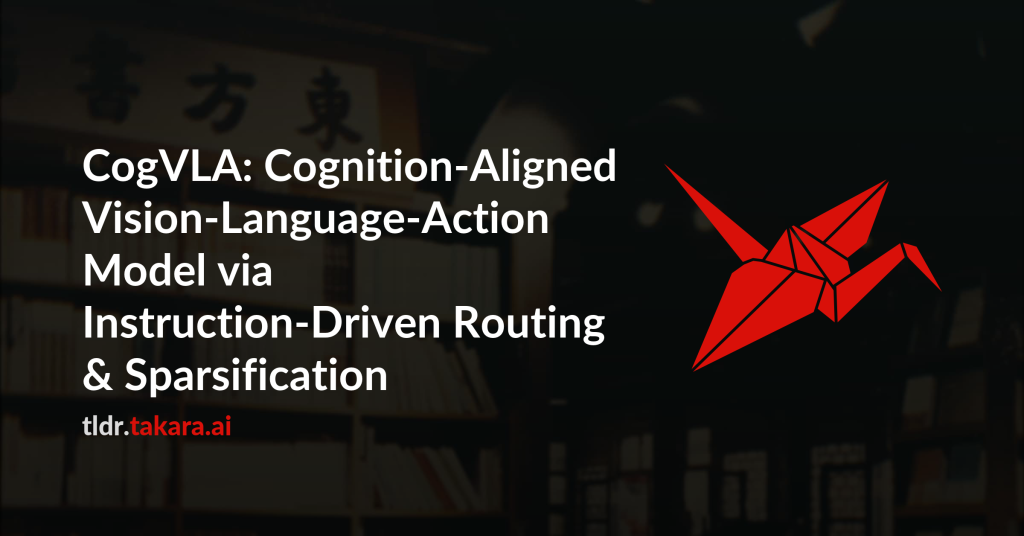Recent Vision-Language-Action (VLA) models built on pre-trained
Vision-Language Models (VLMs) require extensive post-training, resulting in
high computational overhead that limits scalability and deployment.We propose
CogVLA, a Cognition-Aligned Vision-Language-Action framework that leverages
instruction-driven routing and sparsification to improve both efficiency and
performance. CogVLA draws inspiration from human multimodal coordination and
introduces a 3-stage progressive architecture. 1) Encoder-FiLM based
Aggregation Routing (EFA-Routing) injects instruction information into the
vision encoder to selectively aggregate and compress dual-stream visual tokens,
forming a instruction-aware latent representation. 2) Building upon this
compact visual encoding, LLM-FiLM based Pruning Routing (LFP-Routing)
introduces action intent into the language model by pruning
instruction-irrelevant visually grounded tokens, thereby achieving token-level
sparsity. 3) To ensure that compressed perception inputs can still support
accurate and coherent action generation, we introduce V-L-A Coupled Attention
(CAtten), which combines causal vision-language attention with bidirectional
action parallel decoding. Extensive experiments on the LIBERO benchmark and
real-world robotic tasks demonstrate that CogVLA achieves state-of-the-art
performance with success rates of 97.4% and 70.0%, respectively, while reducing
training costs by 2.5-fold and decreasing inference latency by 2.8-fold
compared to OpenVLA. CogVLA is open-sourced and publicly available at
https://github.com/JiuTian-VL/CogVLA.

